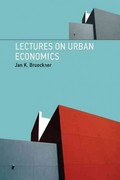Question
1. Assume that a competitive firm has the total cost function: TC =1 q 340 q 2+770 q +1700TC=1q3-40q2+770q+1700 Suppose the price of the firm's
1. Assume that a competitive firm has the total cost function:
TC=1q340q2+770q+1700TC=1q3-40q2+770q+1700
Suppose the price of the firm's output (sold in integer units) is $600 per unit.
Using calculus and formulas (but no tables and restricting your use of spreadsheets to implementing the quadratic formula) to find a solution, how many units should the firm produce to maximize profit?
Please specify your answer as an integer.
Hint:The first derivative of the total cost function is the marginal cost function.
Set the marginal cost equal to the marginal revenue (price in this case) to define an equation for the optimal quantity q.
Rearrange the equation to the quadratic form aq2+ bq + c = 0, where a, b, and c are constants.
Use the quadratic formula to solve for q:
q=bb24ac2aq=-bb2-4ac2a
For non-integer quantity, round up and down to find the optimal value.
2. Suppose a competitive firm has as its total cost function:
TC=26+3q2TC=26+3q2
Suppose the firm's output can be sold (in integer units) at $61 per unit.
Using calculus and formulas (but no tables or spreadsheets) to find a solution, how many units should the firm produce to maximize profit?
Please specify your answer as an integer. In the case of equal profit from rounding up and down for a non-integer initial solution quantity, enter the higher quantity.
3. Assume that a monopolist faces a demand curve for its product given by:
p=802qp=80-2q
Further assume that the firm's cost function is:
TC=440+8qTC=440+8q
Using calculus and formulas (but no tables or spreadsheets) to find a solution, how much output should the firm produce at the optimal price?
Round the optimal quantity to the nearest hundredth before computing the optimal price, which you should then round to the nearest cent. Note: Non-integer quantities may make sense when each unit of q represents a bundle of many individual items.
Hint:Define a formula for Total Revenue using the demand curve equation. Then take the derivative of the Total Revenue and Total Cost formulas. Use these derivative equations to perform a marginal analysis.
Step by Step Solution
There are 3 Steps involved in it
Step: 1

Get Instant Access to Expert-Tailored Solutions
See step-by-step solutions with expert insights and AI powered tools for academic success
Step: 2

Step: 3

Ace Your Homework with AI
Get the answers you need in no time with our AI-driven, step-by-step assistance
Get Started


